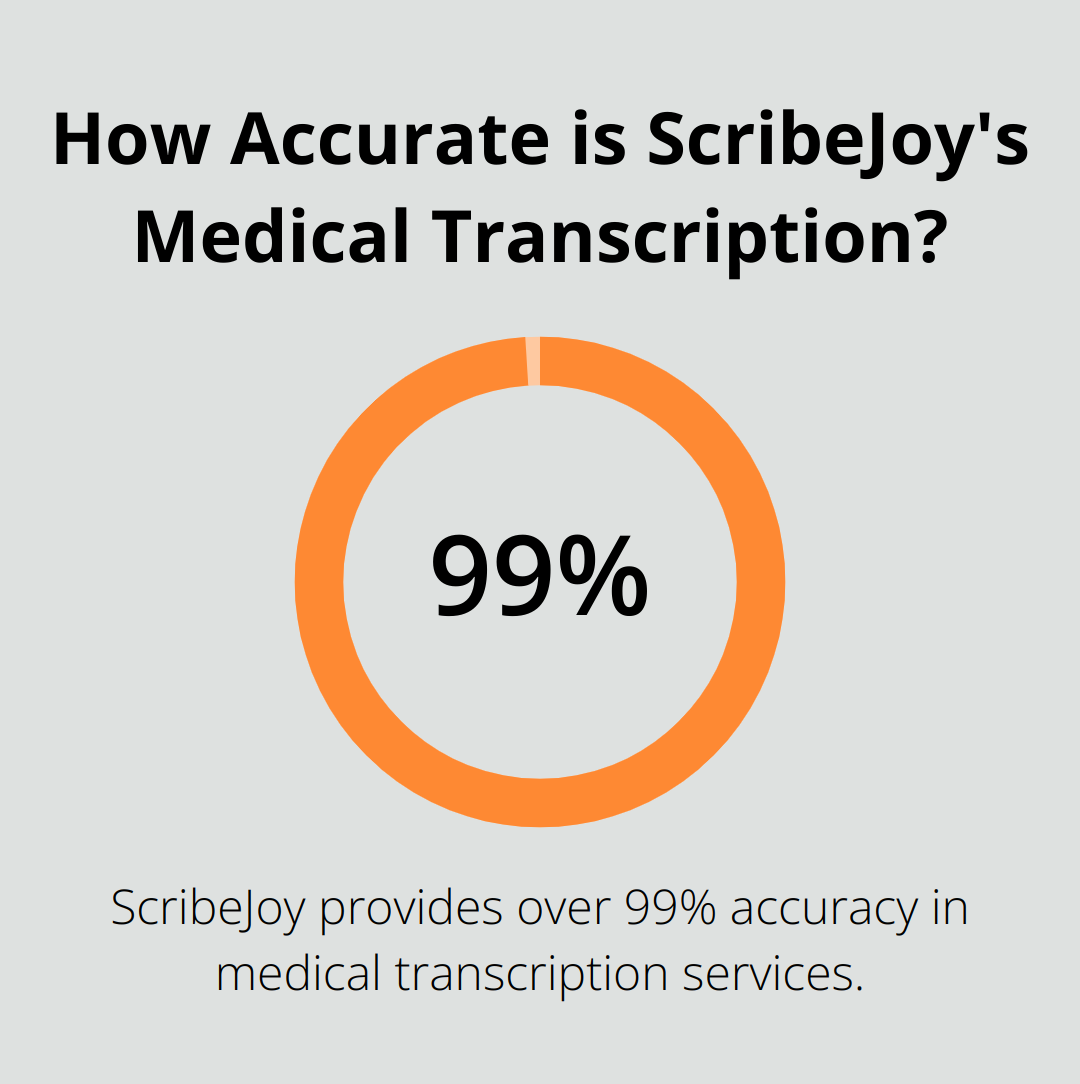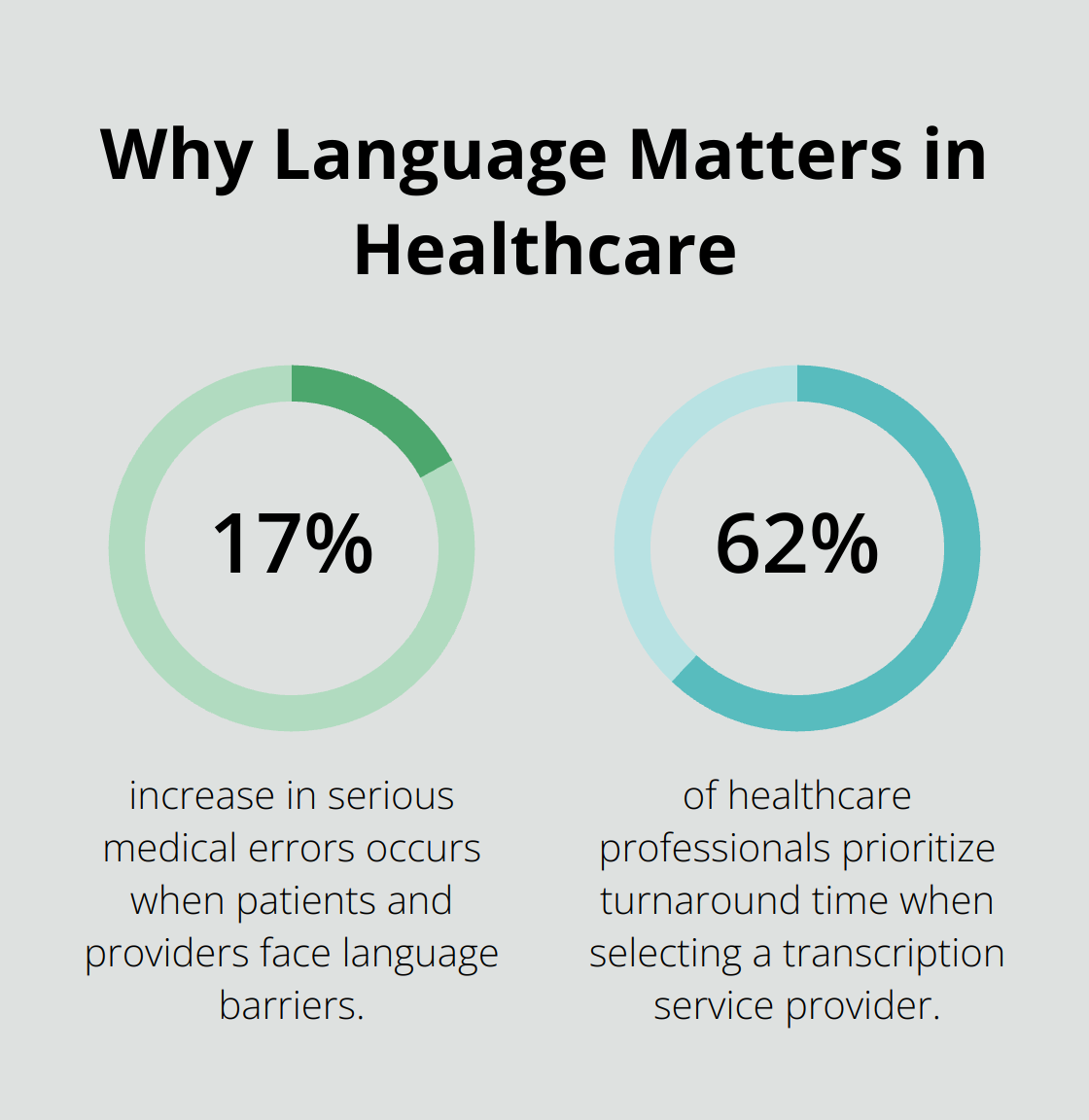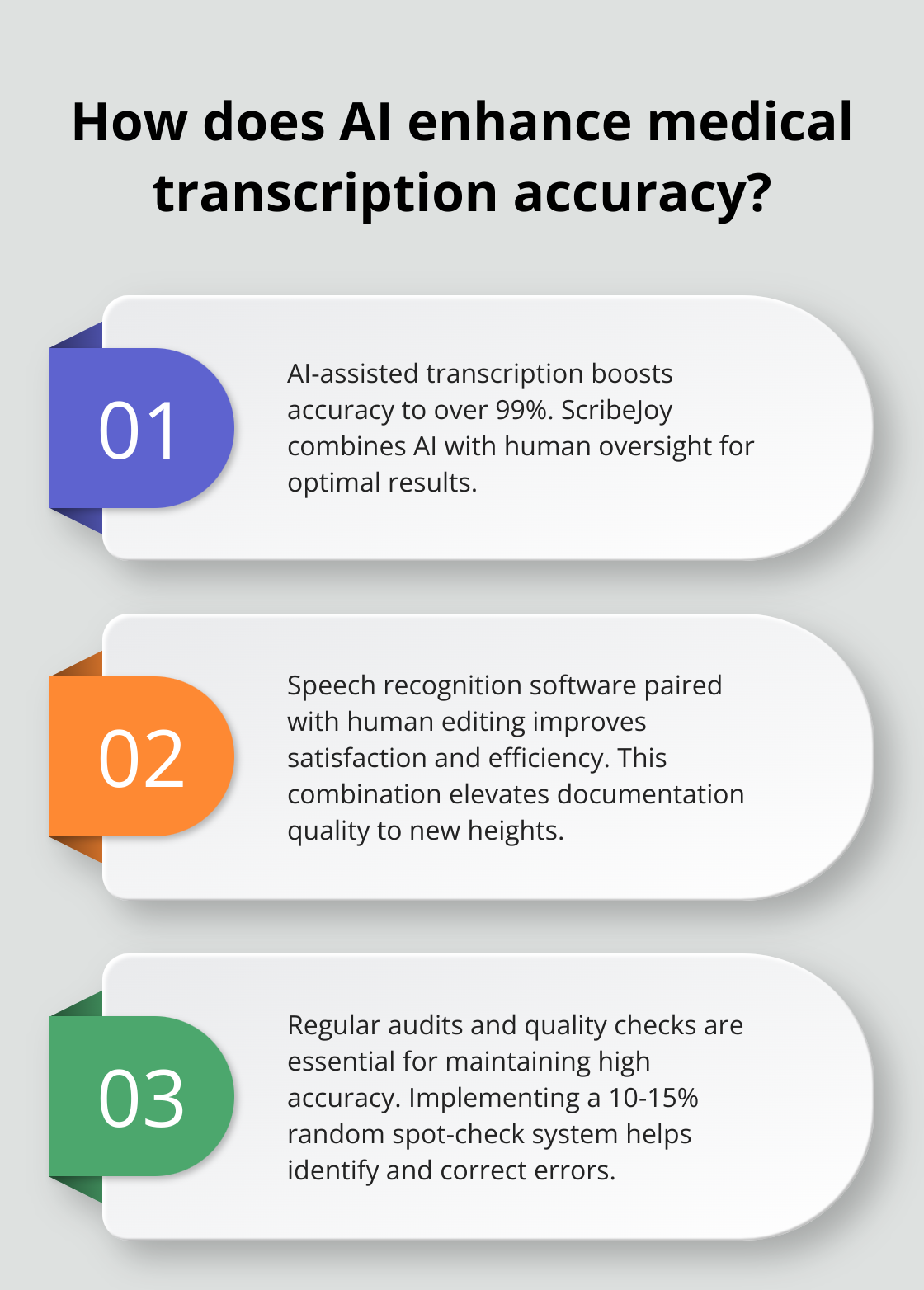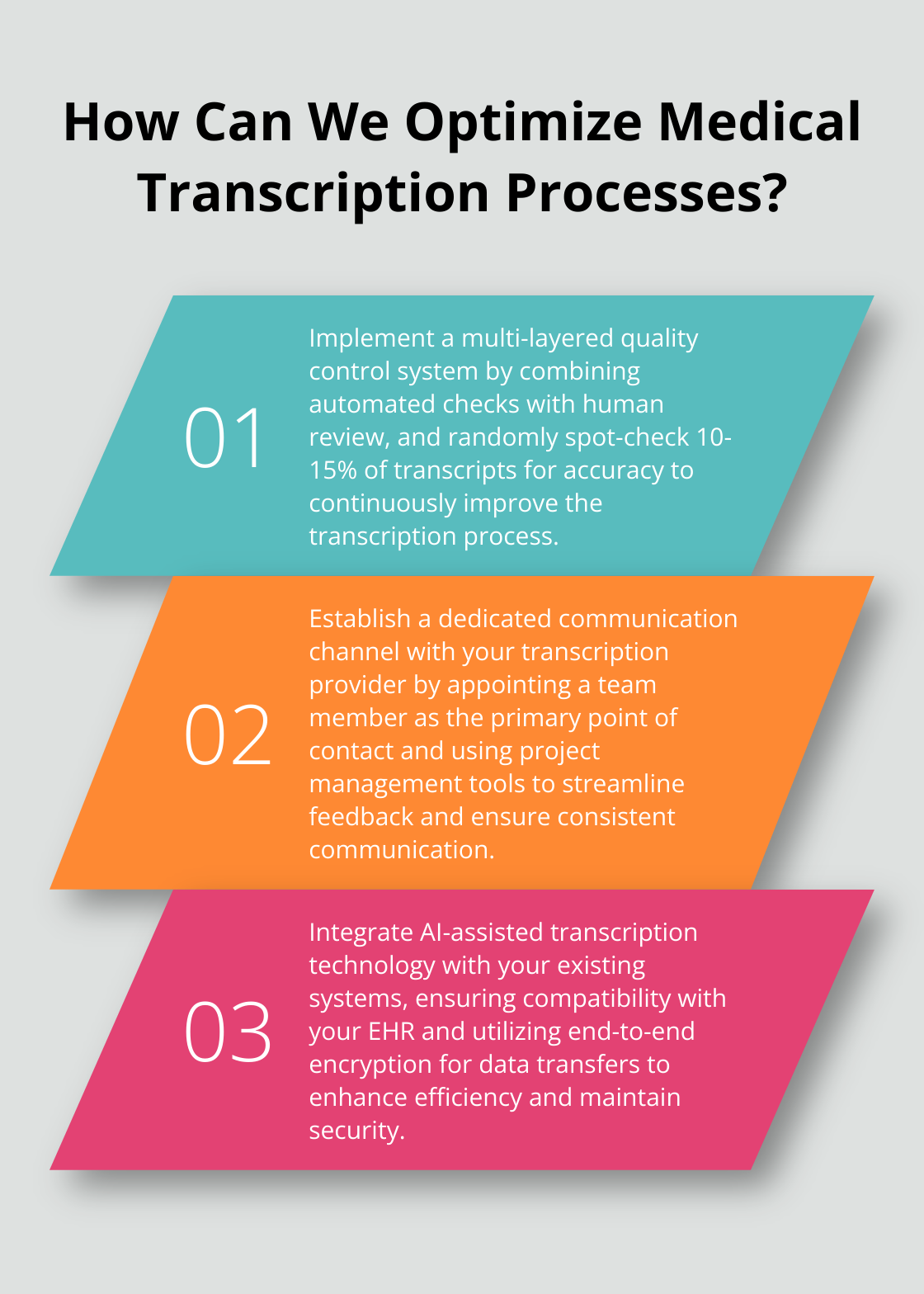Global medical transcription services… cornerstone of modern healthcare documentation. ScriberJoy—yep, that’s us—has seen it all, how these services grease the wheels and lift patient care across borders.
But, hang tight—because going global with transcription? Not a walk in the park. This post is your GPS through the jungle of benefits, the quagmire of challenges, and the treasure map to best practices for squeezing every ounce of goodness out of these international medical transcription services.
What Are Global Medical Transcription Services?
The Backbone of Healthcare Documentation
So, global medical transcription services-what’s the deal? They transform those jargon-filled, rushed-spoken medical records into written text. And, trust me, these services are the lifeline healthcare providers cling to-they need clear patient histories, diagnoses, treatment plans. It’s just…the backbone of healthcare.
The Expanding Market
And here’s the kicker-the transcription market? It’s not just growing; it’s rocketing. We’re talking projections of $5.37 billion by 2032 with a 12.30% CAGR. Translation: a massive overhaul of healthcare documentation as we know it.

What’s fueling this spike? Two biggies:
- Chronic diseases on the rise (more patients = more records = more transcription)
- Providers finally getting wise to digital record-keeping perks
Outsourcing: A Strategic Move
Outsourcing transcription. Not just a buzzword-it’s a tactical play. Why do healthcare folks do it? Oh, let us count the ways:
- Cost-Effectiveness: Wave goodbye to costly in-house transcription teams.
- Round-the-Clock Service: Global operators span time zones. Never a moment lost.
- Specialized Expertise: They know their medical gobbledygook, inside out-formatting quirks and all.
- Flexibility: Handling workload swings like champs (especially when things get hectic).
Key Players in the Field
This market? It’s a battleground. Heavy hitters like Nuance Communications and 3M M*Modal headlining the show, pushing tech limits with AI and speech recognition. But don’t count out the newbies-fresh faces on the scene like ScribeJoy provides over 99% accuracy. This mix keeps everyone on their toes, driving the market forward.
Technology: The Game-Changer
Let’s talk tech-it’s flipping the script. EHR systems with voice recognition are the norm now. AI isn’t just a buzzword; it’s automating hours of mind-numbing tasks.
Speed and accuracy are non-negotiable in this biz. Mess up a dosage decimal or botch a diagnosis note and…boom-big problems. That’s why top services blend whiz-bang tech with human know-how for a safety net of accuracy.
Looking ahead, getting a grip on global medical transcription means juggling the good and the not-so-good. Stick around as we dive into the common hurdles for healthcare providers and get to grips with tackling them head-on.
Navigating Global Transcription Hurdles
Global medical transcription services offer immense benefits, but… surprise, surprise – they’ve got their fair share of hurdles. So, let’s dig into the big headaches healthcare pros face in wrangling these services, and hey, maybe even tackle how to jump those hurdles.
The Language Barrier
First up, the language barrier. Imagine medical jargon – already sounds like a foreign language – now translate that into an actual foreign language. Yikes. According to the Journal of General Internal Medicine, there’s this pesky 17% spike in serious medical blunders when patients and providers can’t get on the same page language-wise.

How to dodge this bullet? Well, plenty of transcription outfits are hiring these multilingual maestros. But hold up – do your homework. Make sure your pick of the litter boasts native speakers who’ve got the chops in both languages you’re dealing with. Get samples specific to your medical field, and trust but verify.
Time Zone Tango
Ah, the old time zone shuffle. Sure, going global lets you keep the lights on around the clock. But, spoiler alert – it can also mean playing phone tag across continents. HIMSS found that a whopping 62% of healthcare folks put the hammer down on turnaround time when picking a transcription sidekick.
Want to keep that time zone tap dance on beat? Nail down those Service Level Agreements (SLAs) with your provider. Spell out exactly what’s what for report turnaround (like, discharge summaries in 4 hours, routine notes by tomorrow). Regular reviews can keep this train on the rails.
Data Security in the Digital Age
Data security – now there’s a buzzkill. In 2024, the average data breach set folks back $4.88 million. So yeah, vet your transcription partner like you’re guarding Fort Knox.
Step one: HIPAA compliance – bare minimum, folks. Ask ‘em about how they handle encryption (both in transit and at rest). Make sure there are regular security audits and ongoing data protection boot camps for staff. And hey, don’t be bashful about asking for the nitty-gritty details on their security protocols.
Quality Control and Accuracy
Next on the docket: quality control. Look, mucking up medical documentation can snowball into serious patient care snafus. Solution? A solid quality control routine is non-negotiable. This should be about:
- Regularly auditing those transcriptions
- Creating feedback loops between med pros and transcriptionists
- Keep training those transcriptionists on the latest in med speak and industry shifts
Some outfits, like ScribeJoy, have hitched AI tech to human oversight to crank up accuracy beyond 99%. This tag team can slice errors and beef up quality big time.
Technological Integration
Last but not least, the tech puzzle – getting global transcription services to vibe with your current healthcare systems. Compatibility woes between EHR systems and transcription software are a recipe for inefficiency.
Fixing this? Go with transcription gigs that offer flexible integration options. Hunt for providers that embrace various file formats and have got a track record integrating with top EHR systems. A robust API? It’s your new best friend for seamless data flow between your setup and their service.
So, what’s the takeaway? Sure, global medical transcription services bring big perks, but they need some careful choreography. Stick around for the next chapter where we’ll dive into the art of picking and rolling out these services to make the most of ’em… while dodging the pitfalls like a pro.
How to Excel in Global Medical Transcription
Select Your Provider Strategically
Picking a transcription service – it’s not just about who’s cheap. You want accuracy and reliability. Those are your non-negotiables. So, get curious about their quality control, turnaround time, and specialty experience. Fancy a sample? Get one, then have your team give it the eagle-eye review. You need to know they measure up.

Dive into their tech setup. Are they dabbling in AI-assisted transcription? Got any integration hiccups with your systems? These techy bits – they can make or break efficiency. (Take ScribeJoy, for instance, it teams AI with human oversight, boasting over 99% accuracy.)
Establish Effective Communication Channels
Communication – it’s king. Seriously, it can make or break your process. Regular check-ins with your provider? Essential. And some project management tools to keep it all on track and feedback flowing? A must.
Nominate a communication hero on your team to quarterback the service relationship. This guy or gal will keep things smooth, consistent, and squash misunderstandings.
Implement Robust Quality Control
Think of a layered cake… that’s your quality control system. Kick things off with automated checks for the usual suspects, then crank it up to human review. Some folks even go for a spot-check whimsy – grabbing 10-15% of transcripts for random accuracy checks.
And make mistakes your teacher. A feedback loop where errors turn into Eureka moments – gold. Feed these back to your transcriptionists to nix future flubs.
Harness Technology for Enhanced Results
Tech – your new best friend. Speech recognition software paired with human nudges can elevate satisfaction, documentation quality, and efficiency to new heights.
Lock down security with top-notch file transfers and encryption. Your transcription shouldn’t be the Achilles’ heel in your security armor.
Prioritize Compliance and Security
Compliance – not just a buzzword, but a shield for your patients and practice. Your transcription team better speak fluent HIPAA and all the other jargon.
Regular audits – yep, need those. Think quarterly quality and regulation reality checks.
It’s a package deal – compliance covers data storage and transfer. Your provider should wrap your data in end-to-end encryption and have crystal-clear retention and destruction policies.
Final Thoughts
Global medical transcription services have flipped the script on healthcare documentation. These services-efficient, around-the-clock, wallet-friendly-sound great, right? But, hold up… there are hurdles. Language barriers and data security put a bit of a damper on the party. Healthcare providers? They’ve got to wade through this maze smartly to snag the good stuff and dodge the pitfalls.

Picking the right provider? It’s like finding the perfect avocado-essential and often elusive. ScribeJoy provides over 99% accuracy by teaming up AI with a human touch, guaranteeing top-notch medical documentation. This dynamic duo lets healthcare pros zero in on patient care without missing a beat on the paperwork front.
The future of global medical transcription-spoiler alert-it’s looking bright. With market forecasts hitting $5.37 billion by 2032, tech like AI and speech recognition are only going to up the ante on accuracy and speed. But-humans, don’t pack your bags yet. That personal vibe? Still key. A tech-expert mashup? Yep, that’s the sweet spot.

Leave a Reply
You must be logged in to post a comment.